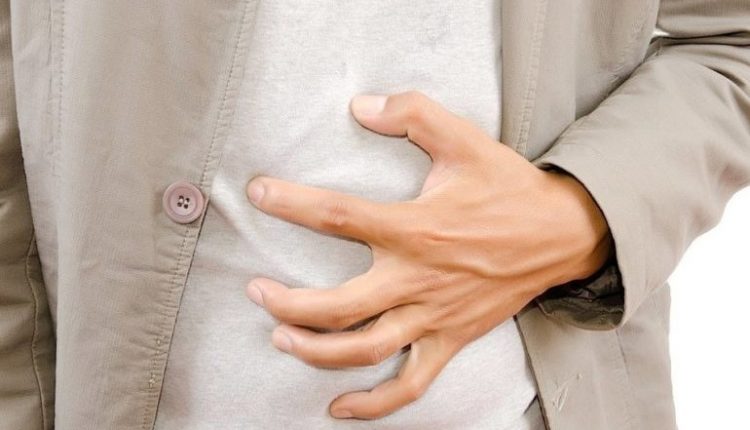
Gastro-oesophageal reflux: what it is, what are the symptoms and what is the treatment
Gastro-oesophageal reflux disease occurs in 10-20% of adults. Reflux occurs due to incompetence of the lower oesophageal sphincter, which results in loss of sphincter tone and recurrent transient releases not related to swallowing but induced by gastric distension or stimulation of the pharyngeal cavity
The angle of the cardio-oesophageal junction is a determining factor for gastro-oesophageal joint competence, together with the action of the diaphragm and the position assumed (orthostatic, clinostatic, semi-orthostatic).
Triggers include weight gain, fatty foods, caffeine, fizzy drinks, alcohol, smoking.
Certain drugs are also capable of reducing lower oesophageal sphincter pressure (anticholinergics, antihistamines, tricyclic antidepressants, Ca-antagonists, progesterone, nitrates).
Complications include oesophagitis, oesophageal peptic ulcers, oesophageal stenosis Barrett’s oesophagus and oesophageal adenocarcinoma.
The caustic component of the reflux, combined with the inability to eliminate it in the presence of reduced local protective functions of the mucosa, is the basis of oesophagitis.
Symptomatology of gastro-oesophageal reflux disease
The main symptom of gastro-oesophageal reflux disease is pyrosis, which can occur independently of regurgitation of gastric contents into the oral cavity.
Often, however, concomitant. coughing, hoarseness or respiratory wheezing.oesophagitis may cause pain on swallowing (odinophagia) and oesophageal haemorrhage, usually mild, but in some cases severe.
Stenoses that develop over previous erosions and ulcerations cause dysphagia for solid foods.
Esophageal peptic ulcers cause the same type of pain as gastric or duodenal ulcers: only the anatomical site of the pain itself changes, usually localised in the retrosternal region.
Healing is very slow with a tendency to form stenosis.
Diagnosis of gastro-oesophageal reflux disease
Often, only the anamnesis can provide indications for a diagnosis.
In the presence of typical symptoms of gastro-oesophageal reflux disease, a course of acid secretion suppression therapy is indicated.
If symptoms persist, further diagnostic investigations are required.
Endoscopy with biopsies of the abnormal areas is the reference test.
Only in this way can changes in the mucous membrane of the Barrett’s oesophagus be detected with certainty.
In the case of endoscopy that is negative for histological lesions but with persistence of symptoms despite therapy with proton pump inhibitors, the second step is 24-hour oesophageal pHmetry.
Oesophageal manometry is instead reserved for the study of oesophageal peristalsis when surgical treatment is planned.
Treatment
First of all, special attention should be paid to diet, avoiding coffee, alcohol, fat, and smoking.
The head of the bed should be elevated about 15 cm and the last meal should be eaten at least :2-3 hours before bedtime.
Pharmacological therapy is based on proton pump inhibitors: omeprazole 20 mg, lansoprazole 30 mg, pantoprazole 40 mg or esomeprazole 40 mg 30-60 minutes before breakfast and, in some cases, twice a day spaced 12 hours apart.
Although there do not appear to be any adverse events since administration .
In the long term of this class of drugs, it is recommended to adjust the dosage to the minimum necessary to prevent symptoms.
It is therefore not contraindicated to take the drugs in intermittent or as-needed doses.
Anti-H2 drugs (ranitidine 150 mg before bedtime) or prokinetic drugs (metoclopramide 10 mg 15-30 minutes before meals and at bedtime) are an alternative but usually less effective.
However, their role as an adjunct to pump inhibitors is appreciated in cases particularly resistant to monotherapy with pump inhibitors.
Antireflux surgery (laparoscopic or endoscopic) is reserved for patients with severe oesophagitis resistant to drug therapy and in the presence of large hiatal hernia, haemorrhage, stenosis or ulcers.
In oesophageal strictures there is an indication for endoscopic dilatation with repeated sessions.
Barrett’s oesophagus consists of the transformation of the epithelium of the oesophago-gastric junction from squamous to columnar and is a precursor to adenocarcinoma: endoscopic surveillance every three to five years in the absence of dysplasia on histological test is mandatory in these cases.
The American College of Gastroenterology guidelines recommend endoscopic ablation in low-grade dysplasia with endoscopic surveillance every 12 months as an alternative.
In high-grade dysplasia, endoscopic ablation is required in the absence of major comorbidities (endoscopic mucosectomy, photodynamic therapy, cryotherapy, laser ablation).
Read Also
Emergency Live Even More…Live: Download The New Free App Of Your Newspaper For IOS And Android
Gastro-Oesophageal Reflux: Causes And Remedies
Gastro-Oesophageal Reflux: Symptoms, Diagnosis And Treatment
Straight Leg Raise: The New Manoeuvre To Diagnose Gastro-Oesophageal Reflux Disease
Gastroenterology: Endoscopic Treatment For Gastro-Oesophageal Reflux
Oesophagitis: Symptoms, Diagnosis And Treatment
Asthma, The Disease That Takes Your Breath Away
Gastroesophageal Reflux: Causes, Symptoms, Tests For Diagnosis And Treatment
Global Strategy For Asthma Management And Prevention
Paediatrics: ‘Asthma May Have ‘Protective’ Action Against Covid’
Esophageal Achalasia, The Treatment Is Endoscopic
Oesophageal Achalasia: Symptoms And How To Treat It
Eosinophilic Oesophagitis: What It Is, What The Symptoms Are And How To Treat It
Gastroesophageal Reflux: Causes, Symptoms, Tests For Diagnosis And Treatment
Irritable Bowel Syndrome (IBS): A Benign Condition To Keep Under Control
Long Covid, Study In Neurogastroenterology And Motility: Main Symptoms Are Diarrhoea And Asthenia
Symptoms And Remedies Of A Gastro-Oesophageal Reflux Cough
Gastro-Oesophageal Reflux Disease (GERD): Symptoms, Diagnosis And Treatment



